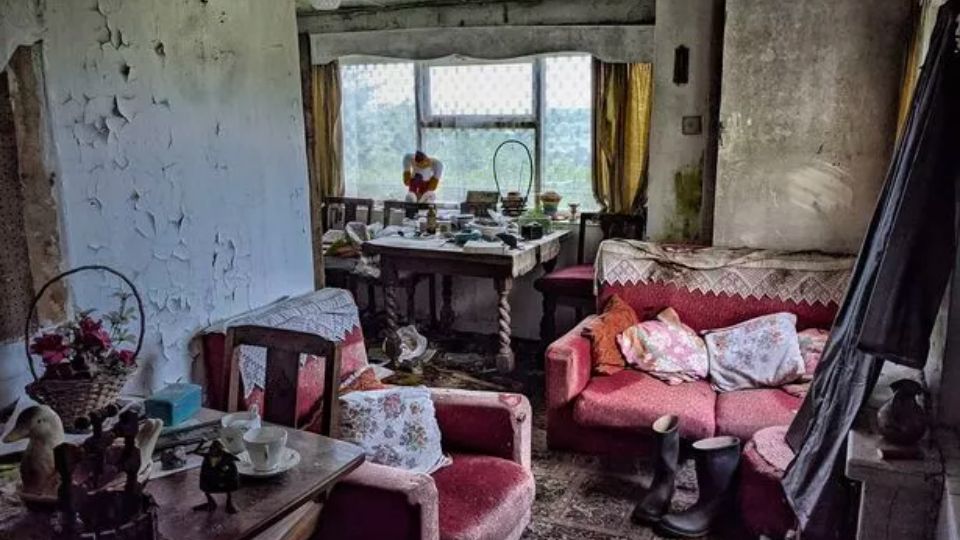Florida is famous for its beautiful beaches, exciting theme parks, and stunning natural attractions. However, the state also boasts a fascinating and varied history, along with a more enigmatic and intriguing aspect. Florida is home to numerous ruins and abandoned places that provide a fascinating window into the state’s history and present. These sites are sure to captivate the adventurous and inquisitive. In this blog post, we will present you with seven of these places and explain the reasons why you should consider visiting them.
The Abandoned Places in Florida You Can Visit Legally
Fort Dade – Egmont Key
Fort Dade was constructed on Egmont Key, an island located at the mouth of Tampa Bay, during the late 1800s. The fort was an essential component of the coastal defense system of the United States, featuring batteries, barracks, a hospital, a lighthouse, and a power plant. The fort remained in operation until 1923, at which point it was decommissioned and left vacant. Today, the fort is now a part of the Egmont Key State Park and can be easily reached by ferry or boat. Discover the ancient fort and immerse yourself in the island’s breathtaking wildlife and scenery.
Bulow Plantation Ruins in Flagler Beach
Bulow Plantation, founded in 1821 by Major Charles Wilhelm Bulow, was a sugar plantation. The plantation spanned more than 9,000 acres and yielded a variety of crops including sugar, cotton, rice, and indigo. The plantation also boasted a state-of-the-art sugar mill, known for its advanced technology. In 1836, the plantation was destroyed during the Second Seminole War when it was burned down by Native Americans. Today, anyone can visit the plantation ruins at the Bulow Plantation Ruins Historic State Park. The sugar mill, wells, foundations, and chimneys are all visible.
Cape Romano’s Dome Houses
The Dome Houses consist of six unique dome-shaped structures constructed on Cape Romano, an island near Marco Island, in the year 1980. Bob Lee, an oil producer and inventor, designed these structures as a self-sufficient and eco-friendly vacation home for his family. The structures were constructed using concrete and steel, and were equipped with solar panels, rainwater collectors, and a generator. The structures were left empty in 1992, following the damage caused by Hurricane Andrew. Today, the structures can be seen when the tide is low as they gradually sink into the sea. These beautiful sights are visible from afar, whether you’re on a boat or in a kayak. However, access to them is restricted.
Also Read: These are the 5 Worst Laws in American History Till Now
Old Cahawba – Selma
Old Cahawba served as Alabama’s inaugural state capital from 1820 to 1826. The town was situated where the Alabama and Cahaba rivers met, and had a vibrant community with people from different backgrounds. The town boasted a courthouse, a statehouse, a jail, a bank, a hotel, and numerous mansions. Nevertheless, the town was plagued by regular floods, diseases, fires, and crimes, leading to its eventual abandonment by both the government and the residents. Currently, Old Cahawba is under the management of the Alabama Historical Commission as an archaeological park. Exploring the area, you’ll find the remnants of ancient structures and a cemetery that holds the final resting place of pioneers, soldiers, slaves, and prisoners.
Miami Marine Stadium – Key Biscayne
Miami Marine Stadium, constructed in 1963 on Key Biscayne, an island near Miami, was a water sports stadium. The stadium was created by Hilario Candela, a Cuban architect, and had a seating capacity of 6,566. The stadium was a venue for a wide range of events, including powerboat races, concerts, and political rallies. The stadium was well-known for its unique floating stage that could be easily maneuvered across the water. The stadium was shut down in 1992 due to the destruction caused by Hurricane Andrew. Since then, the stadium has fallen into disrepair and has attracted graffiti artists and urban explorers.
Bongoland in Port Orange
Bongoland, a theme park, was established in 1948 in Port Orange, a city located near Daytona Beach. The park was named in honor of Bongo, a beloved baboon who served as the park’s mascot. The park had a range of attractions, including a train ride, a zoo, a botanical garden, and a miniature village. The park also had a variety of dinosaur statues, crafted from a combination of concrete and chicken wire. The park was shut down in 1952 because of low attendance and financial difficulties. Today, the park is now a part of the Sugar Mill Botanical Gardens and is accessible to everyone. Visitors can explore the dinosaur statues, remnants of train tracks, zoo cages, and a miniature village.
Discovery Island – Bay Lake
From 1974 to 1999, Disney operated Discovery Island, a theme park located on an island in Bay Lake, near Orlando. The park was a haven for wildlife, offering visitors the chance to observe a variety of fascinating birds, reptiles, mammals, and plants. The park featured a walk-through aviary, a flamingo lagoon, a turtle beach, and a monkey colony. The park closed in 1999 because of low attendance, allegations of animal abuse, and the opening of Animal Kingdom. Since then, the park has been neglected and overgrown, and is inaccessible to the public. Only a handful of individuals have successfully infiltrated the island and have provided accounts of the remnants of the attractions, structures, and wildlife.
In summary
Florida offers a wide range of attractions beyond its sunny weather and enjoyable activities. Additionally, it is filled with a rich tapestry of historical events, enigmatic puzzles, and thrilling escapades. Florida is home to numerous ruins and abandoned places that are open to the public. Exploring these sites allows you to uncover their intriguing stories and hidden secrets. These places offer a wide range of attractions that cater to various interests, including history, nature, and art. Make sure to visit these ruins and abandoned places when you’re in Florida next time. You’ll be glad you did.



Leave a Reply